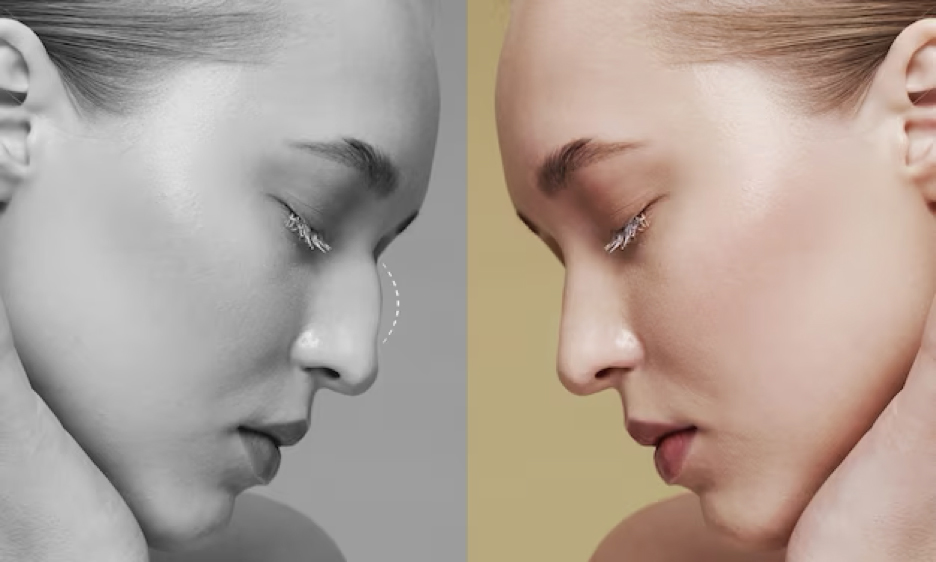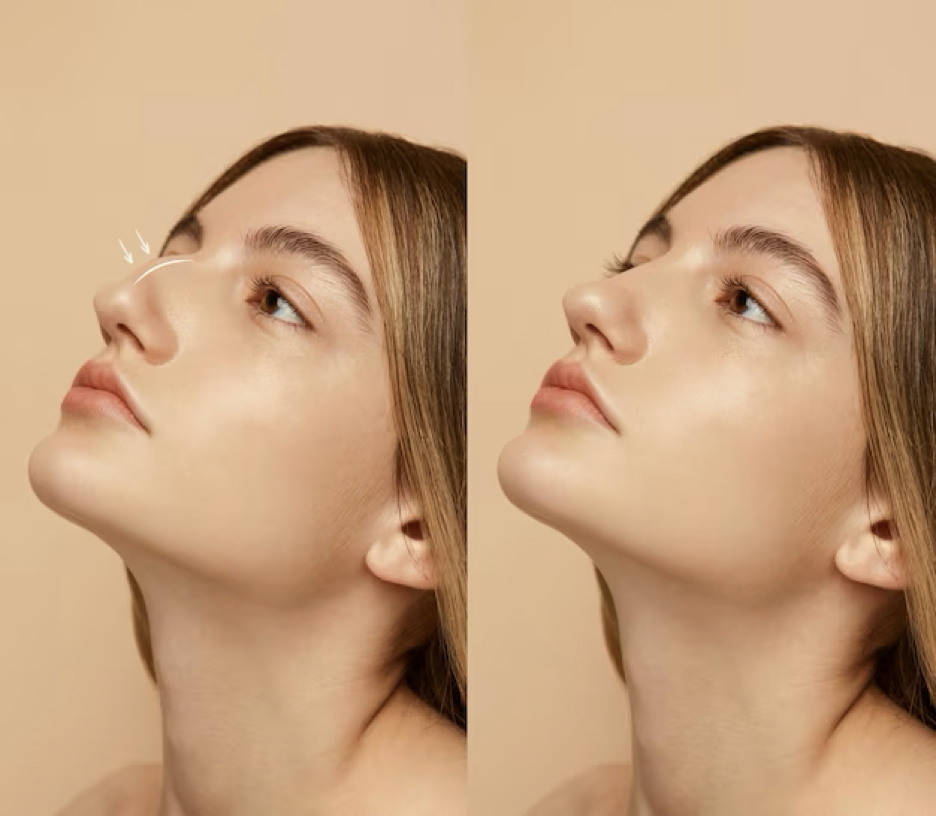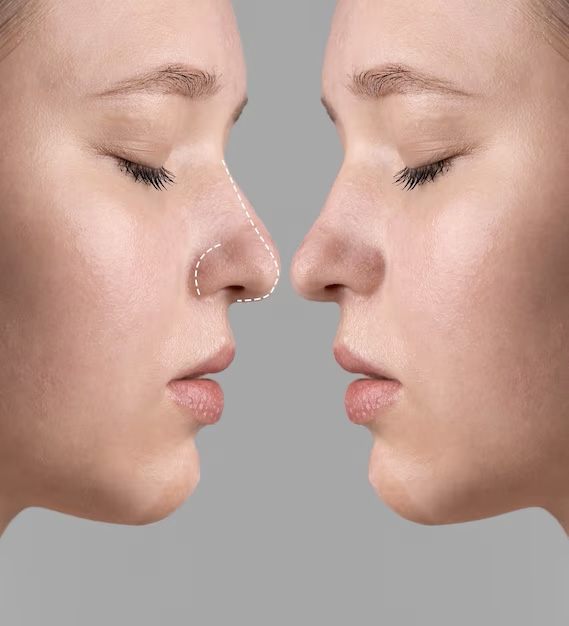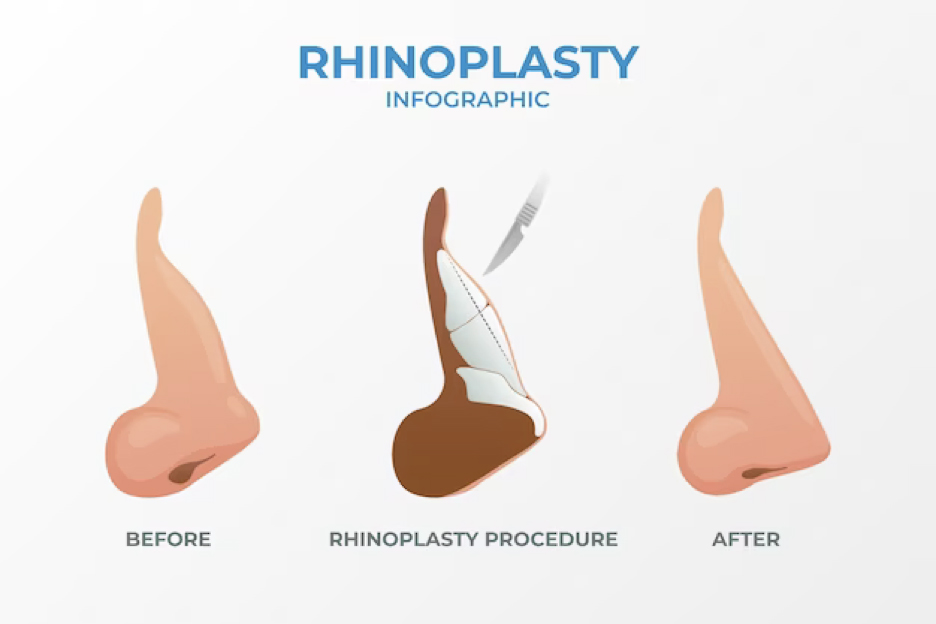Rhinoplasty
Face procedures
Rhinoplasty
Rhinoplasty in in California and Florida (Beverly hills, Newport beach, Orange County, Miami)
Rhinoplasty is the name of the operation that improves the form (shape) and function (breathing) of the nose. It is one of the most common facial plastic surgery procedures, and it is popular among both men and women. Rhinoplasty can reduce or increase the size of the nose, reshape the tip of the nose, move it up or down, and narrow or straighten the bridge. Some patients want their nose smaller, some want it straightened, some want the hump reduced, and others yet want it narrower. Thus, the shape and look of your nose after a rhinoplasty will depend on your anatomy, the surgical technique used and your own desires. To achieve a satisfying outcome, the patient’s desired result should be the goal of the surgical plan.
What can a rhinoplasty achieve
When performed by a skilled plastic surgeon rhinoplasty can improve a number of aesthetic and functional issues. In addition to removing humps, improving symmetry, and narrowing or widening the nasal bridge, this procedure can be used to change the angle of the nasal tip, enlarge or reduce the size of the opening of the nostrils, enhance breathing, and alter the length of the nose. If you have a specific concern in mind, you can share this objective with the plastic surgeon, and he will determine if your desired outcome is possible.

Are you a good candidate for a rhinoplasty?
Rhinoplasty requires not only exceptional skill but also the highest sense of artistry to create a natural-looking nose, which is in harmony with the rest of the facial features. Just as every patient’s nose is different, their faces are also different, and the new shape has to fit the face. This ideal new shape will be determined by many factors, including one’s height, age, skin thickness, and ethnic background. Rhinoplasty will also help with the configuration of other features, such as the forehead, eyes and chin, to make a more natural look.
You may be a candidate for rhinoplasty if:
-
- You desire to improve the appearance of your nose
- You desire to improve nasal breathing
- You have had previous nasal surgery and are dissatisfied with the outcome
- The reconstructive or functional portion of a septorhinoplasty is also covered under most insurance policies.
The amount of change that can be expected depends on many factors, including skin type, ethnicity, and age. At your initial consultation, an overall evaluation of the underlying structure and overlying skin will help determine what outcome is a realistic expectation.
How is a rhinoplasty performed surgically?
There are many ways to perform a rhinoplasty and there are new techniques being developd constantly. In general, rhinoplasty is performed by placing well-hidden incisions in and around the nostrils. These incisions allow the surgeon to lift the skin to obtain excellent exposure of the underlying bone and cartilage. The underlying bone and cartilage is then contoured to make the nose more harmonious and balanced to the rest of the face. Lately, “preservation rhinoplasty” has been popularized for certain patients. In this procedure, there is no incision placed on the outside of the nose but all of the incisions are place inside the nostril to preserve the underlying ligaments and structures that keeps the nose stable. This is not used for every patients but only for specific candidates.
The procedure typically lasts between two to four hours depending on the complexity of the case. Many patients are referred to us for revision rhinoplasty. These cases are of higher complexity because of the corrections that need to be made as a result of the initial surgery.


Open vs. closed rhinoplasty
Rhinoplasty can be performed as an open or closed surgery. A closed rhinoplasty uses incisions that are located within the nose, so there are no visible scars; however, not all types of concerns can be addressed using this method and therefore not every patient is a good candidate for this approach. An open rhinoplasty requires an incision on the underside of the nostril, which allows access the internal structures of the nose and provides significant more control and visual for the surgeon. Once healed, the scar is often barely noticeable.
What is the recovery after a rhinoplasty?
Following your rhinoplasty procedure your nose will be congested but will gradually improve. You might need packing of the nose after surgery as well as a splint on top of it but these will be removed typically within a week. At times, a special dissolvable suture is used to stabilize the changes and eliminates the need for nasal packing. Patients, therefore, are more comfortable and generally less swollen. With the elimination of nasal packing, pain, swelling, bleeding, and discoloration are dramatically reduced making the recovery period much more pleasant for the patient.
There is usually very little pain after the operation. Most patients experience pressure from the swelling inside the nose. The discomfort is easily controlled with pain medication. The majority of patients take pain medication the first night, about half take it the second night, and a few take it the third night. After that the majority only need Tylenol® if anything.
You will experience variable degrees of swelling and bruising for the first 7-14 days. Sleep with your head above the level of your heart to minimize the swelling and bruising. Most swelling should be gone after about six weeks; however, there may be a small, virtually unnoticeable degree of swelling present for several months after treatment. Full healing takes place in a year.
Most patients can return to work and social events after 7-14 days with makeup as needed.

How long do rhinoplasty result last?
If performed by a board certified plastic surgeon, typically the outcome of your nose after a rhinoplasty should last for a lifetime. As mentioned above, it can take up to one year after the procedure for all signs of inflammation to completely resolve. One of the many benefits of nose surgery is the ability to achieve an outcome that endures for decades, and the vast majority of patients never feel the need to pursue a secondary procedure. To reduce the potential need for revisional surgery, it is of utmost importance of selecting a highly experienced plastic surgeon who is board-certified and fellowship-trained to perform your rhinoplasty. This also minimizes the likelihood of complications after the procedure. Fortunately, unless the nose is injured in the future or a complication arises, rhinoplasty results should remain stable. The framework of the nose is permanently altered, and patients can enjoy their enhancement indefinitely. There are cases however in which revisions needs to be done but these are rare.
Will rhinoplasty leave scars?
If you have an open rhinoplasty, you may have a small scar on the underside of your nose. Most patients report that this mark is virtually invisible once fully healed. A closed rhinoplasty will not leave any external scars.
